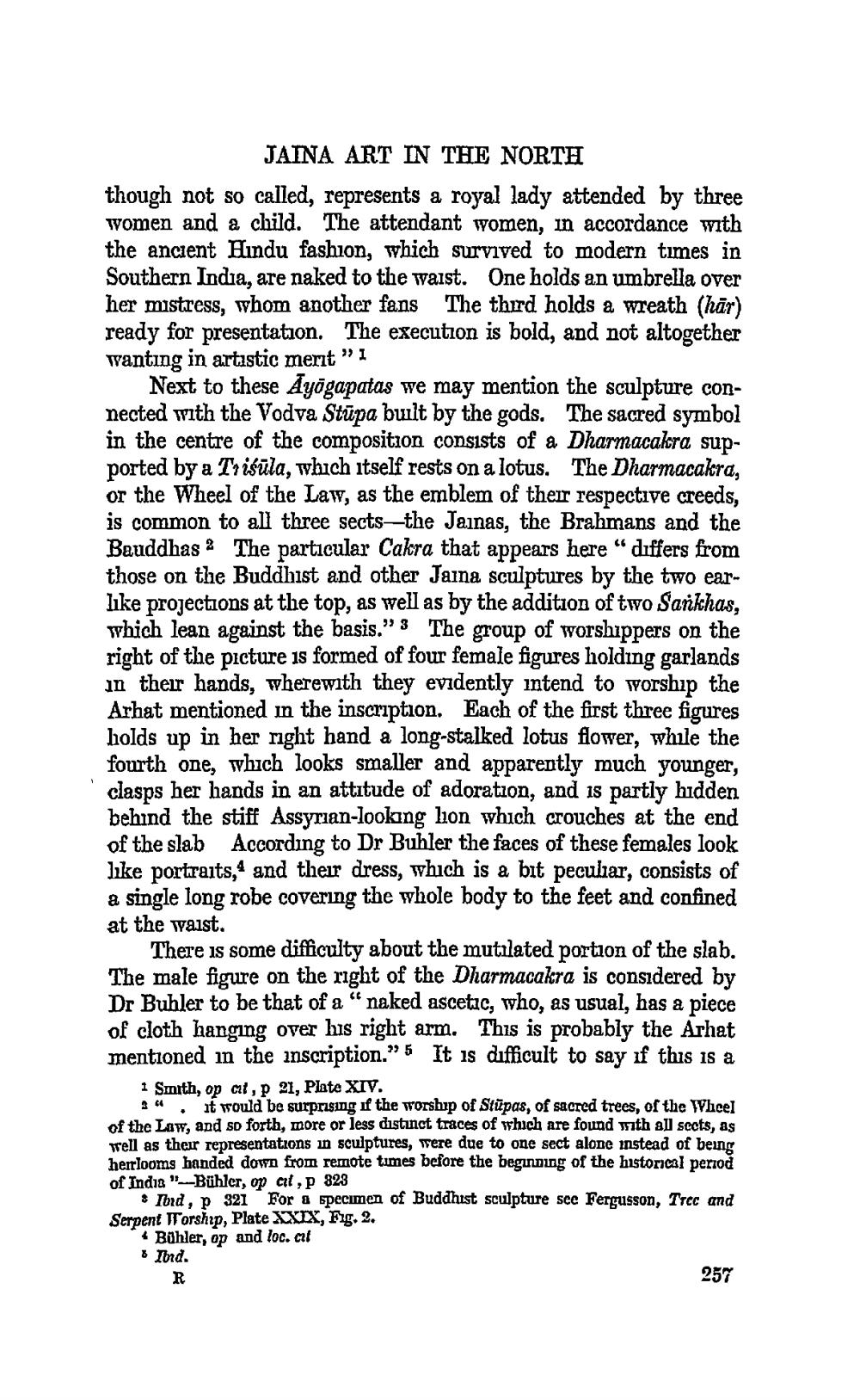________________ JAINA ART IN THE NORTH though not so called, represents a royal lady attended by three women and a child. The attendant women, in accordance with the ancient Hindu fashion, which survived to modern times in Southern India, are naked to the waist. One holds an umbrella over her mistress, whom another fans The third holds a wreath (har) ready for presentation. The execution is bold, and not altogether wanting in artistic mert" Next to these Ayogapatas we may mention the sculpture connected with the Vodva Stupa built by the gods. The sacred symbol in the centre of the composition consists of a Dharmacakra supported by a Thisula, which itself rests on a lotus. The Dharmacakra, or the Wheel of the Law, as the emblem of their respective creeds, is common to all three sects--the Jainas, the Brahmans and the Bauddhas 2 The particular Cakra that appears here " differs from those on the Buddhist and other Jaina sculptures by the two earlike projections at the top, as well as by the addition of two Sarkhas, which lean against the basis." 3 The group of worshippers on the right of the picture is formed of four female figures holding garlands in their hands, wherewith they evidently intend to worship the Arhat mentioned in the inscription. Each of the first three figures holds up in her right hand a long-stalked lotus flower, while the fourth one, which looks smaller and apparently much younger, clasps her hands in an attitude of adoration, and is partly hidden behind the stiff Assyrian-looking lion which crouches at the end of the slab According to Dr Buhler the faces of these females look like portraits, and their dress, which is a bit peculiar, consists of a single long robe covering the whole body to the feet and confined at the waist. There is some difficulty about the mutilated portion of the slab. The male figure on the right of the Dharmacakra is considered by Dr Buhler to be that of a "naked ascetic, who, as usual, has a piece of cloth hanging over his right arm. This is probably the Arhat mentioned in the inscription." 5 It is difficult to say if this is a 1 Smith, op at, p 21, Plate XIV. . at would be surprising of the worship of Stupas, of sacred trees, of the Whcel of the Law, and so forth, more or less distinct traces of which are found with all sects, as well as their representations in sculptures, were due to one sect alone instead of being herrlooms handed down from remote times before the beginning of the historcal period of India"-Buhler, op cl, P 823 Tord, p 321 For a specimen of Buddhist sculpture see Fergusson, Trec and Serpent Torship, Plate XXIX, Fig. 2. * Buhler, op and loc. aul 257 * Tid.




